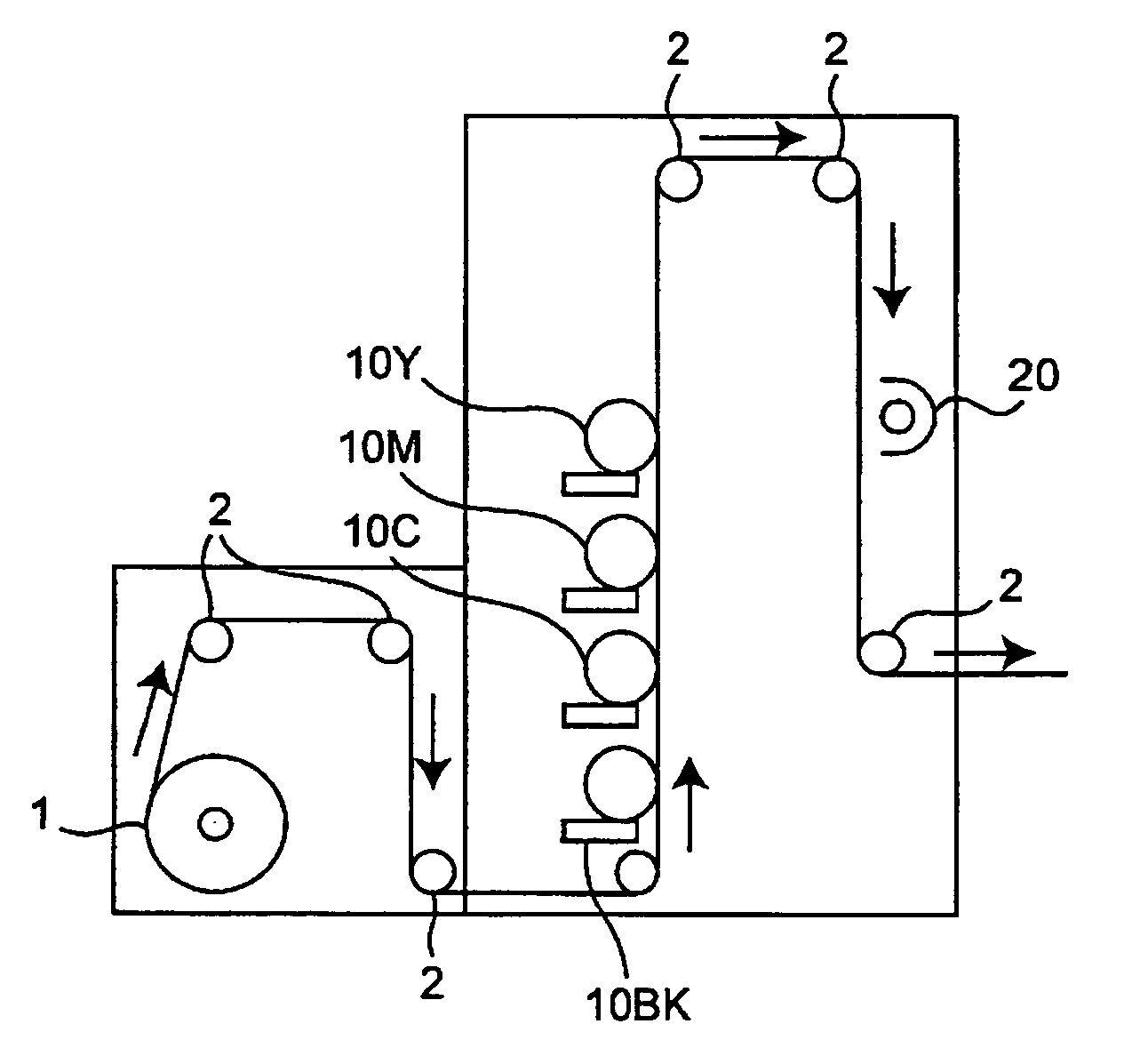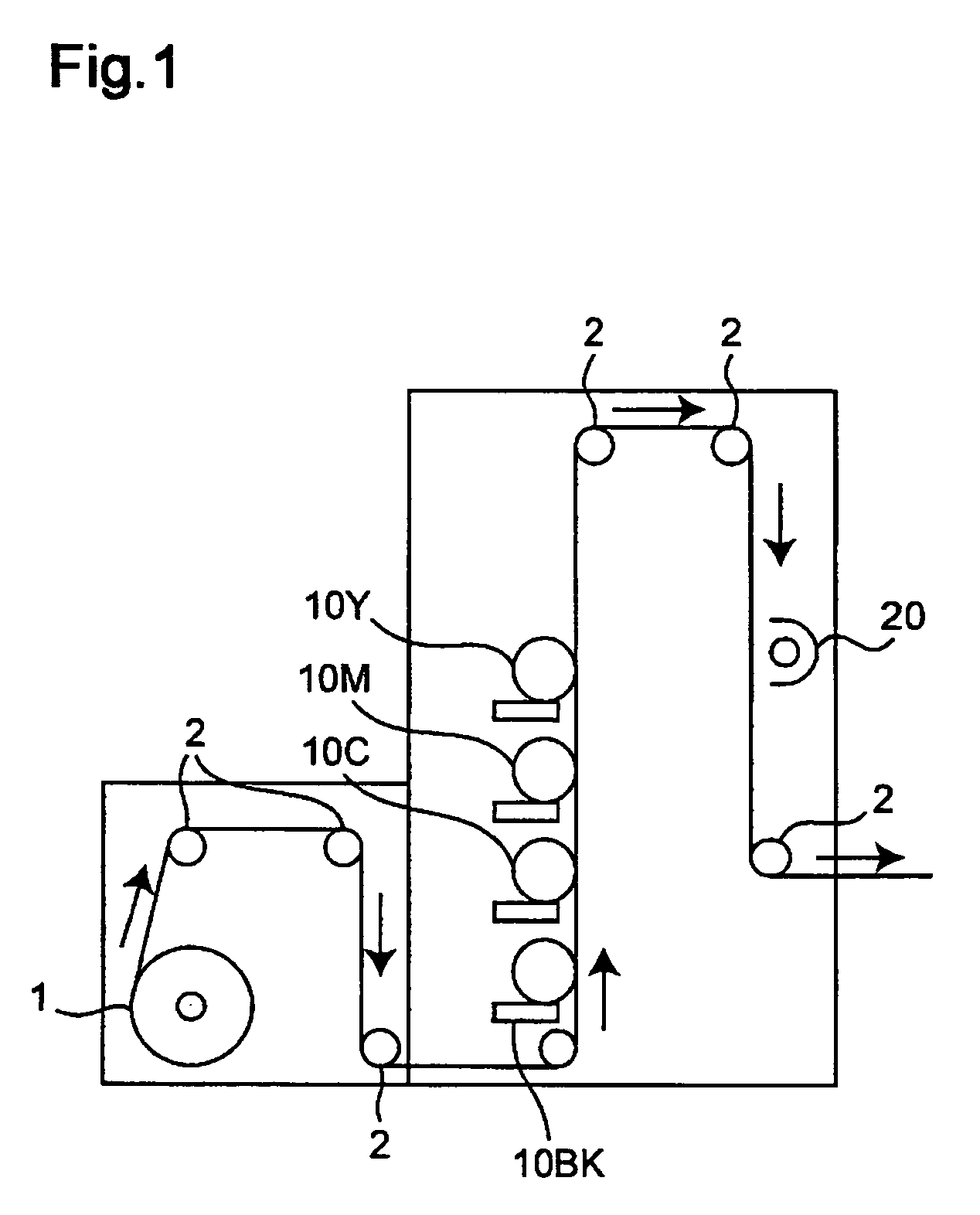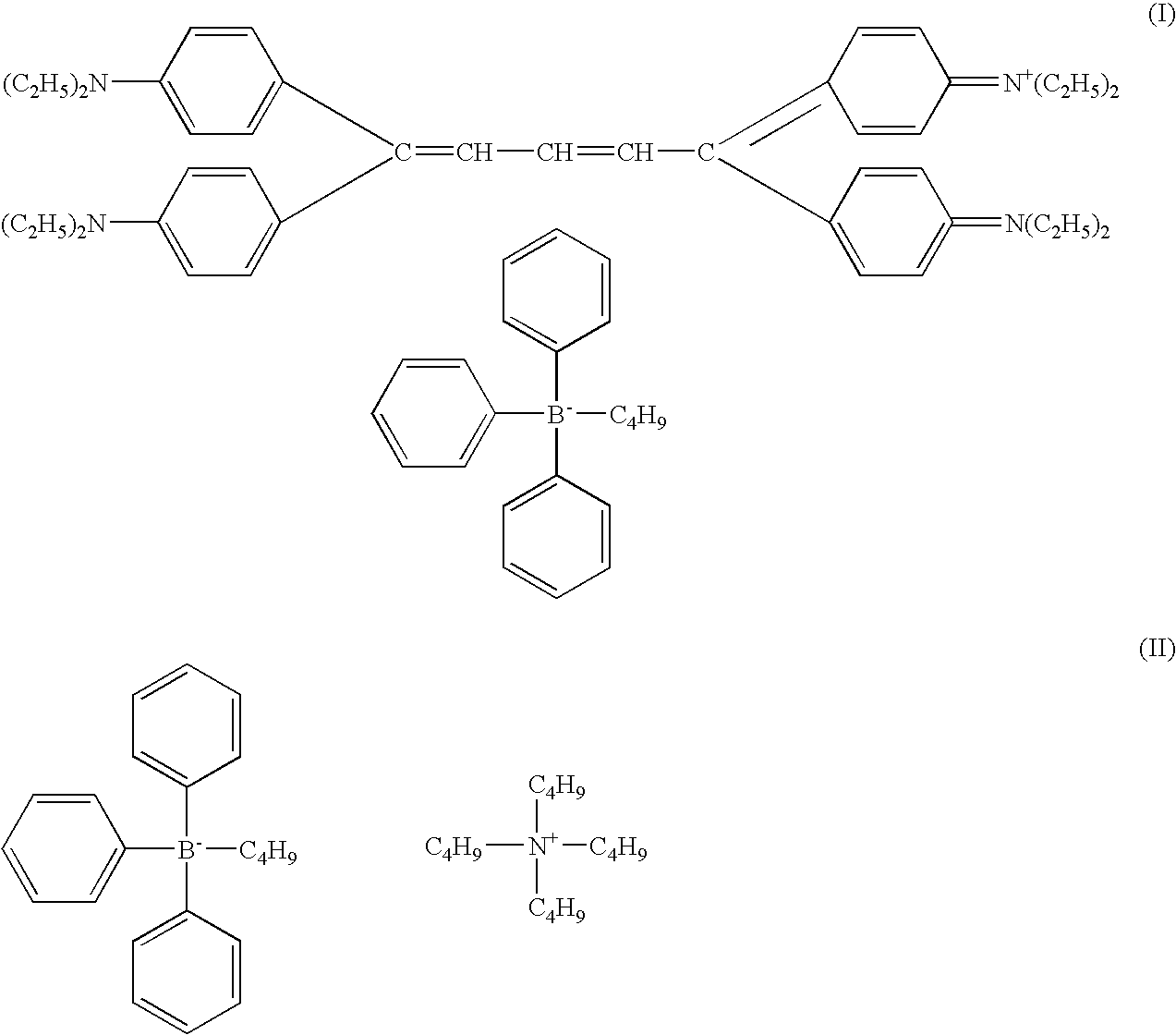Non-contact heat fixing toner
a technology of non-contact heat and toner, applied in the field of toner, can solve the problems of insufficient light energy to be applied to the image of powder toner, insufficient fixing characteristics, and great ambient energy dissipation, and achieve the effect of sufficient fixing properties and image quality, and fixing energy
- Summary
- Abstract
- Description
- Claims
- Application Information
AI Technical Summary
Benefits of technology
Problems solved by technology
Method used
Image
Examples
examples
(Production Example of Polyester Resin)
[0091]To a four-neck flask provided with a thermometer, a stainless stirring stick, a dropping-type condenser and a nitrogen gas directing tube were loaded an alcohol component and an acid component, which were adjusted to a mole ratio as shown in Table 1, together with a polymerization initiator (dibutyltinoxide). This was allowed to react in a mantle heater by heating at 220° C. while being stirred under a nitrogen gas flow. Here, the progress of the reaction was traced by measuring its acid value. At the time of reaching a predetermined acid value, the reaction was completed, and this was cooled to room temperature; thus, polyester resins H1, H2, L1 and L2 were obtained. Each of polyester resins was coarsely pulverized into not more than 1 mm, and was used to manufacture toners shown below. The resulting polyester resins had physical properties, that is, glass transition temperature (Tg), softening point (Tm), acid value, hydroxide value and...
example 14
(Example 14)
Production example of cyan toner
[0119]>
[0120]
Cyan colorant dispersion solutionPigment C.I. Pigment Blue 15:350parts by weightCyanine-based compound3.5parts by weightAminium-based compound6.0parts by weightDodecyl sulfate Na salt10parts by weightIon exchange water200parts by weight
[0121]The above-mentioned components were dispersed in a sand grinder mill to obtain a cyan colorant dispersion solution having a volume-average particle size (D50) of 710 nm.
[0122]>
[0123](Preparation of latex 1HML)
[0124](Dispersion medium 1)
[0125]
Sodium dodecyl sulfate4.05gIon exchange water2500.00g
[0126](1) Preparation of nucleus particles (first stage polymerization):
[0127]To a 5000 ml separable flask equipped with a stirring device, a temperature sensor, a cooling tube and a nitrogen gas directing device, the above-mentioned dispersion medium 1 was charged, and this was heated to a temperature of 80° C. in the flask, while being stirred at a stirring speed of 230 rpm under a nitrogen gas flo...
example 15
(Example 15)
[0147]Production example of magenta toner
[0148]
Magenta colorant dispersion solutionPigment C.I. Pigment Red 12280parts by weightCyanine-based compound4.0parts by weightAminium-based compound6.0parts by weightDodecyl sulfate Na salt10parts by weightIon exchange water200parts by weight
[0149]The above-mentioned components were dispersed in a sand grinder mill to obtain a mazenta colorant dispersion solution having a volume-average particle size (D50) of 160 nm.
[0150]Mazenta toner particles were obtained in a manner similar to Example 14, except that the above mazenta colorant dispersion solution was used and that polyolefin copolymer wax B was used instead of polyolefin copolymer wax A. The number-average particle size and shape coefficient of these magenta toner particles were again measured, and found to be 6.0 μm and 0.965 respectively.
[0151]The magenta toner particles were subjected to treatments using hydrophobic silica, hydrophobic titanium oxide and strontium titanat...
PUM
| Property | Measurement | Unit |
|---|---|---|
| Temperature | aaaaa | aaaaa |
| Temperature | aaaaa | aaaaa |
| Percent by mass | aaaaa | aaaaa |
Abstract
Description
Claims
Application Information
 Login to View More
Login to View More - R&D
- Intellectual Property
- Life Sciences
- Materials
- Tech Scout
- Unparalleled Data Quality
- Higher Quality Content
- 60% Fewer Hallucinations
Browse by: Latest US Patents, China's latest patents, Technical Efficacy Thesaurus, Application Domain, Technology Topic, Popular Technical Reports.
© 2025 PatSnap. All rights reserved.Legal|Privacy policy|Modern Slavery Act Transparency Statement|Sitemap|About US| Contact US: help@patsnap.com



